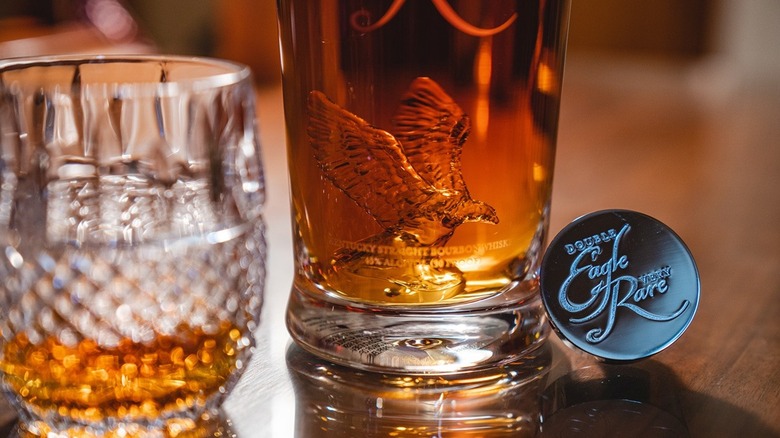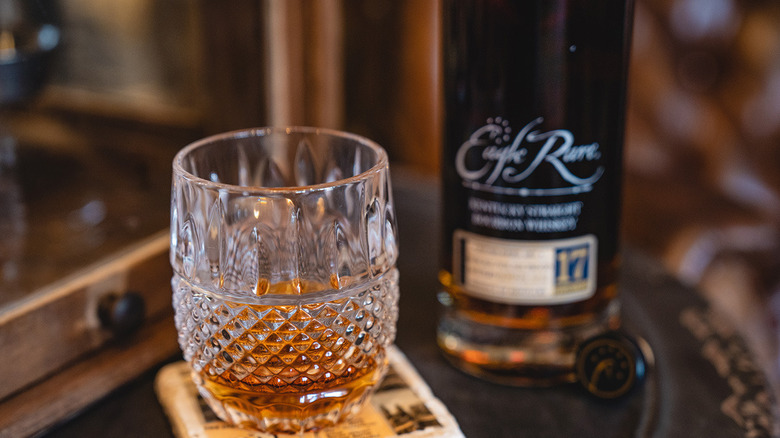How Eagle Rare Bourbon Shaped The Future Success Of This Popular Spirit
The psychedelic '60s and '70s were a major pivot point in American culture that affected way more than just politics and music. The younger generation at this time was rejecting everything their parents stood for, including their drinking preferences. Clear spirits like vodka were becoming increasingly popular, while dark spirits like whiskey were increasingly seen as cheap and inferior. As demand for whiskey diminished, whiskey distillers would lower prices to garner attention, which further solidified whiskey's reputation as a poor man's drink. This challenging market environment forced whiskey distilleries into cutthroat competition for a dwindling number of customers.
In the mid-1970s, Wild Turkey was performing relatively well, and Seagram's supposedly wanted in on the action. The company tapped Charles L. Beam, the master distiller at Four Roses Distillery and grand nephew of the legendary Jim Beam, to create a product that could compete with Wild Turkey. Eagle Rare was first released to the unwashed masses in 1975 to wide acclaim and would go on to reinvigorate a struggling industry. At first release, Eagle Rare was marketed as a luxury bourbon sporting a hefty 10-year age statement and a bold flavor profile. It's still highly regarded enough that it sits at number three on our list of the best bourbons ever made. But Eagle Rare has been far from static over the years. For starters, the Eagle Rare brand was sold to Sazerac in 1989, the company that would go on to become Buffalo Trace 10 years later.
Eagle Rare made bourbon affluent again
The Eagle Rare you know and love today uses Buffalo Trace's mash bill #1, which means that the mash bill initially used by Charles L. Beam in 1975 was likely a different recipe, though when exactly the transition occurred is unclear. Sazerac didn't purchase the Buffalo Trace Distillery until 1992, so from 1989 until 1992, Sazerac was having Eagle Rare produced externally at Heaven Hill Distillery in Kentucky. There are four different expressions of Eagle Rare that we see today, but the evolution of the bourbon is less important than the impact its initial release would have on how bourbon distilleries approached their product.
Eagle Rare proved that luxury bourbon could be successful at a time when cheap bourbon had failed to combat the decline in demand. It doesn't appear to us to be a coincidence that Blanton's would follow that line of thinking in 1984 (nine years after Eagle Rare's debut) by introducing the bourbon world to the concept of single barrel bourbons and, by extension, other exclusive bourbon categories. Blanton's and Eagle Rare would eventually both sit under the Buffalo Trace label as two of the most revolutionary bourbon products of the last 50 years. Contemporary bourbon drinkers would undoubtedly love to be able to purchase whiskey at 1970s prices, but the multi-thousand dollar bottles flying off the shelves today are a testament to the luxury bourbon marketing that Eagle Rare helped to create all those years ago.

